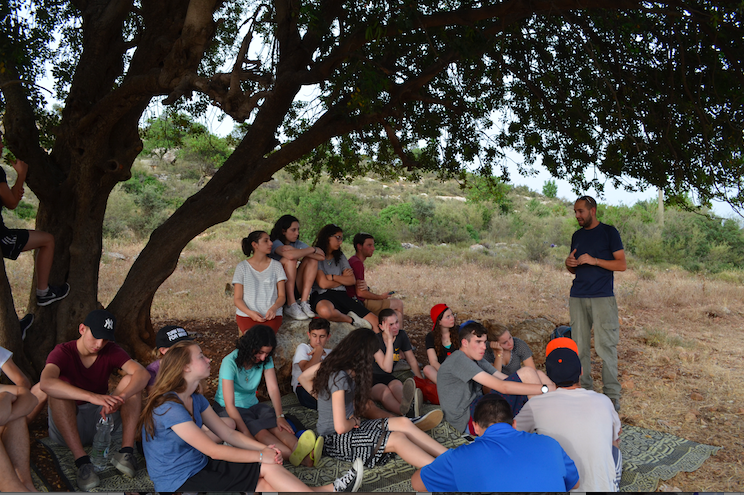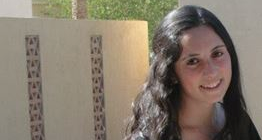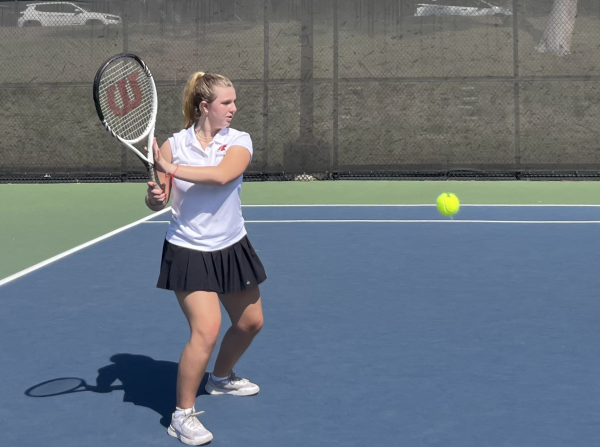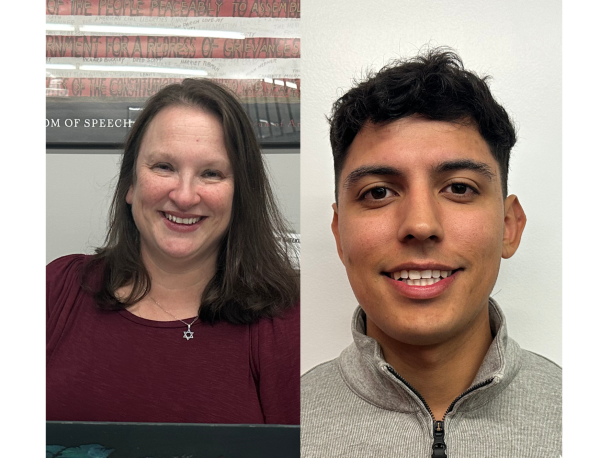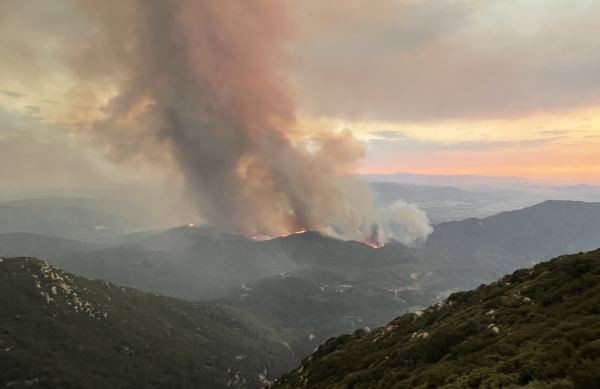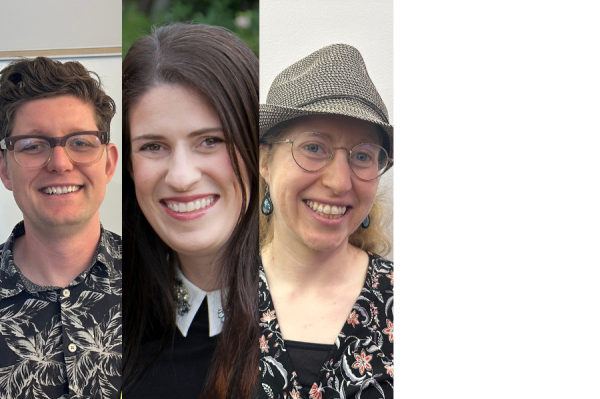SENIORS IN ISRAEL: A deepening reservoir of questions
GUARDS: Learning about Ha’Shomer Ha’Chadash, a volunteer program where people build fences out of rock to protect Jewish farmer’s animals
May 22, 2015
By Margo Feuer, Managing Editor
When I thought about the senior Poland-Israel Experience during my three years at Shalhevet, “Poland” was the word that stood out to me. I’ve been to Israel numerous times both with touring groups and with family. While I was excited to visit my Jewish homeland with my classmates, my thoughts focused almost exclusively on the prospect of concentration camps and mass graves.
I knew Poland would affect me deeply, and it did. I had my share of tears, heartache, hope and inspiration at the railroad tracks of Birkenau. I felt a deeper connection to my Jewish roots than ever before. Though to a more extreme extent than I thought possible, I had the important and reflective experiences I had anticipated. It was exactly what I needed and it’s impossible to overstate how important it has been.
But while I spent hours feeling nervous and scared for Poland, I didn’t spend too much time in advance pondering what I would feel in Israel. Israel feels like home. I didn’t look toward this leg of the trip with fear or angst, or consider how this trip would differ from others, either because I was coming from Poland or because a Shalhevet trip would be differ from others.
To my surprise, a new dimension of Israel blindsided me, and led me to thoughtfully turn inward. Over the past week-and-a-half, my relationship with Israel has been revolutionized. At once, I have a more intimate understanding it and feel a larger chasm than ever between what I know and what I need to answer.
Praying in Maarat Hamachpelah — where many of our forefathers and mothers are buried — broadened my connection to this contentious area of Israel but also left me questioning the moral obligations of all the residents there. I was also forced to ponder the unity and policies of Israelis, after watching two short films at the Ma’ale Film School in Jerusalem and after walking through Rabin Square where Prime Minister Rabin was assassinated by a fellow Jew almost 20 years ago.
I have seen nooks and crannies of Israel I never knew existed. We visited organizations such as Hashomer Hachadash, a group of volunteers that protect Jewish farms from criminals, Tikvot, an organization that aids wounded soldiers and terror victims through sports, and Dialogue Through Dark, a museum that simulates the life of the blind person. From such adventures as these, I will emerge from this trip a more sensitive and aware person. I will be more considerate and sympathetic of others’ situations, plights and struggles as I now have a deeper understanding of what their hardships are.
Having traveled from Poland to Israel, I am also more of aware of my personal mezeg avir (literally translated as weather). The pain I felt at Mydanek or the gratitude that overcame me at the Wolbrom Forest, along with the social growth of being with 30 classmates for over two weeks, will never leave me. More attuned with my natural tendencies and goals for the future, I land in LA more mature and personally aware.
Coming home now from Israel, my reservoir of questions about the Jewish present and future increased immensely. Though this is daunting, I feel a greater motivation than I ever had before to change those question marks into periods.
Becoming the phoenix
By Mati Hurwitz, Sports Editor
When we moved from Poland to Israel, we experienced the l phoenix of Jewish history: the rebirth from ashes. We saw the corruption of the Nazis and the demolition of European Jewry in the camps and in the old Jewish villages. We learned Rabbi Shlomo Carlebach’s famous Krakow niggun and chanted it seemingly everywhere we went. This song starts off slow and becomes gradually festive — like our trip.
And so the rhythm of our experience picked up as we got into Israel, as we were truly engulfed by not just a Jewish community, but the Jewish People.
One memory I’m always going to have is davening Kaballat Shabbat in a random cat square near our Jerusalem hotel. We journeyed through narrow alleys to a dumpy site that had a mini-amphitheater type seating arrangement with stray cats wandering around. All of a sudden, a man shouted out his window, “When are you starting Arvit?”
He didn’t show. But at the end of our tefillah, an unfamiliar face arose from the girls’ side and thanked us for contributing to her Friday night. She told us her name was “Chen,” which none of us have heard of as a name before. I thought it was really cool that she found Chen, favor, in our prayer and decided to join us in the middle of an alleyway. With her, we sang the very tune we had carried from Poland, the Krakow niggun.
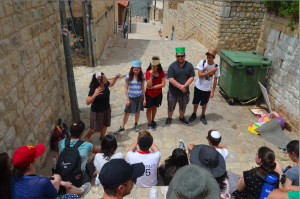
ALLEYS: Seniors listen to a guide during their tour of Tzfat May 26. They have sometimes gathered for informal davening outdoors.
As Shavuos was closing that Sunday, our class gathered outside in an area in between our hotel and a neighboring high-rise. We made our own little kumzits to finish off our holiday and screamed timeless Jewish songs. We sang tov lehodot l’Hashem – it is good to give thanks to God — and once more, the Kraków niggun. A man about six floors up opened his door and came out onto his balcony. With a fist pumping about 100 feet above us, this man joined into our song. He called for the others in his room to watch what was going on in the Lev Yerushalayim common area.
Our voices didn’t just reach up a few flights of stairs. Our melodies connected us with world Jewry. That is the power of Jewish songs. They are what our forefathers passed down from generation to generation and what connect Jews all over the globe. Perhaps a simple yid humming a melody is the true driving force behind the continuity of our people. On our trip, I for sure have felt that power.
Jerusalem — An airport sprint and a day of history
By Sigal Spitzer, Senior Columnist
We made it. And though we have more than a week to go, it feels like the journey is complete. Israel. Just in time for Shabbat and Shavuot.
We are here.
After sprinting through the Zurich airport at 11 last night, we landed this morning at 3:30 a.m. in Tel Aviv. We caught a super-close airplane connection, due to delays in Warsaw — students fell as they ran through Terminal A, then B, then C, then D, and onto the tram until we reached the magical gate of E52. And then we were on our way.
Once we arrived in Israel, there was not a second to be wasted. Directly from the airport, we traveled south to the Burma Road, a dirt highway that runs through the low mountains that fill central Israel. During the War of Independence in 1948, this was a transit route for supplies from Tel Aviv to Jerusalem. Because of the strategic high grounds surrounding it, it saw many battles, including the famous encounter at Latrun, Captain Michy Marcus designed it and it kept the residents of Jerusalem alive for five months until December 1948, when a new road was opened.
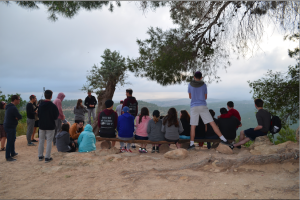 BP Photo by Goldie Fields
BP Photo by Goldie Fields
Almost in time to catch the sunrise, we took five off-road jeeps along the bumpy road, overlooking beautiful views of Beit Shemesh and Beit Meir. We then stopped for a delicious breakfast and inspiring davening at the base of the mountain, all the better to enjoy our first morning in Israel!
After the 2-hour jeep tour, we drove to Jerusalem’s City of David and walked through the water tunnels. Our new tour guide, Gila, traced the area’s Jewish roots from the times of the Neviim until the present. We discussed the foundation of Jerusalem and how the city has grown in all directions over the past couple of hundred years. Then, as a grade, we entered the pitch-black tunnels created to bring water to David’s city. We all held hands and sang Jewish songs as each of us trusted the person in front of us to guide us through the darkness. After Poland, with the Shoah scenes and stories so fresh in my mind, I am so happy and so thankful to be in Israel. The Jewish spirit is palpable and Shalhevet student energy is tangible.
Before preparations for Shabbat and Yom Tov, we enjoyed the Friday afternoon rush at Machane Yehuda in central Jerusalem. Jews of all backgrounds and religious practices were hurrying to prepare for the upcoming holiday while we Shalhevet seniors ate shakshuka, Big Apple Pizza, Burgers Bar and schwarma on Ben Yehuda Street. I am looking forward to a restful and relaxing Shabbat in order to prepare for Shavout. It is going to be special to have all the seniors – joined by Shalhevet alumni who are in Israel this year — studying together on Shavuot in the land where it began.
Shabbat Shalom and Chag Sameach from Yerushalayim!

